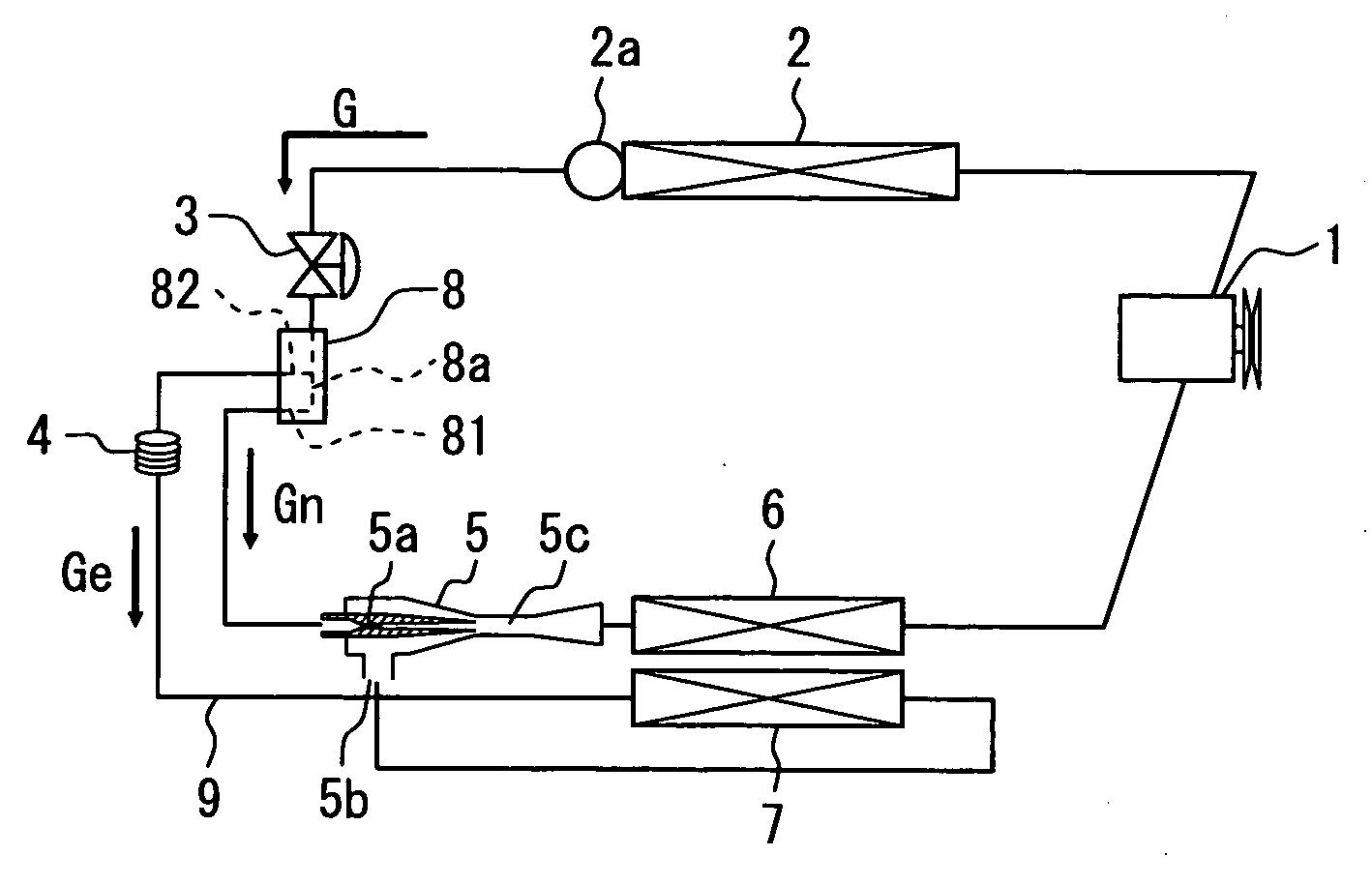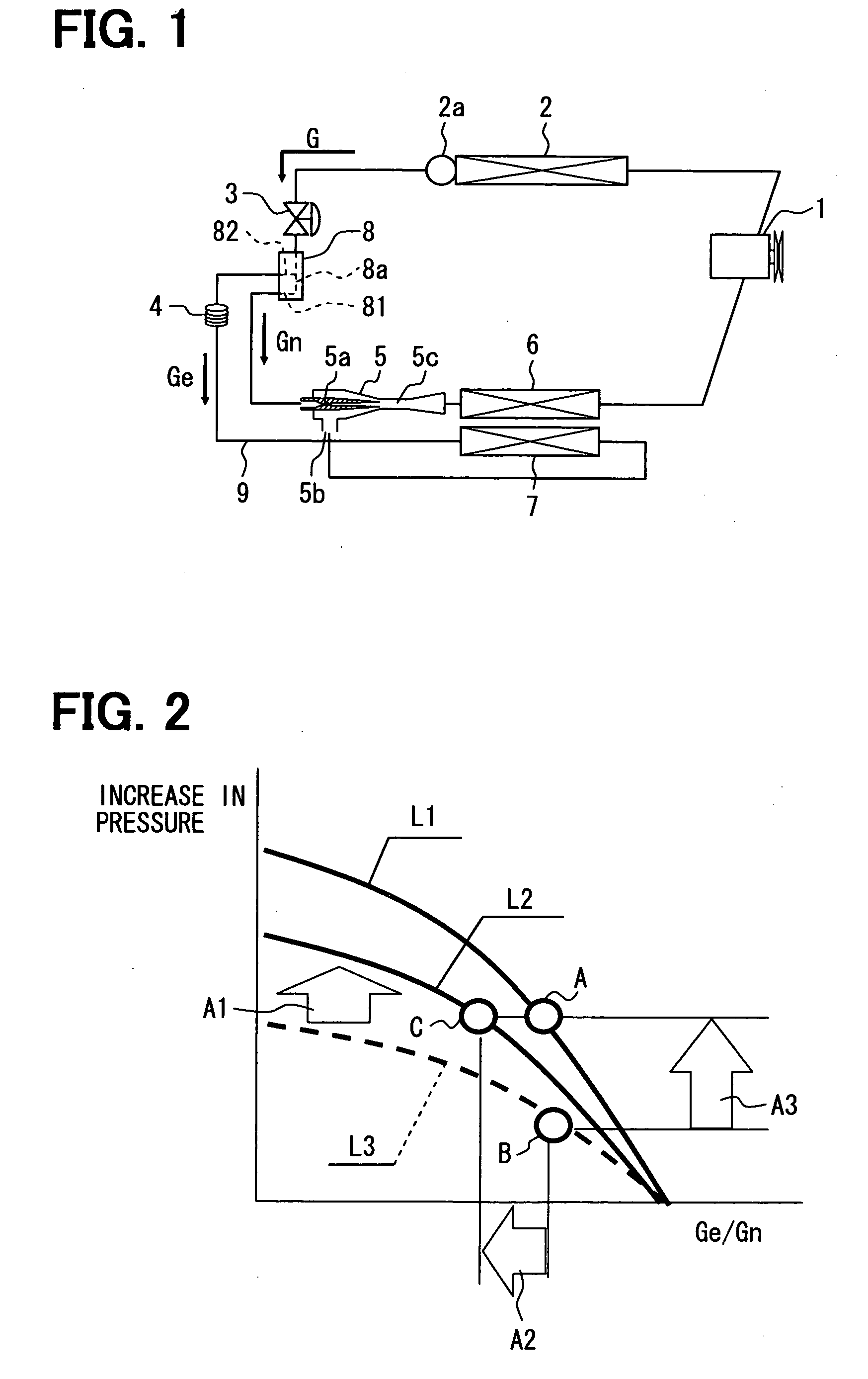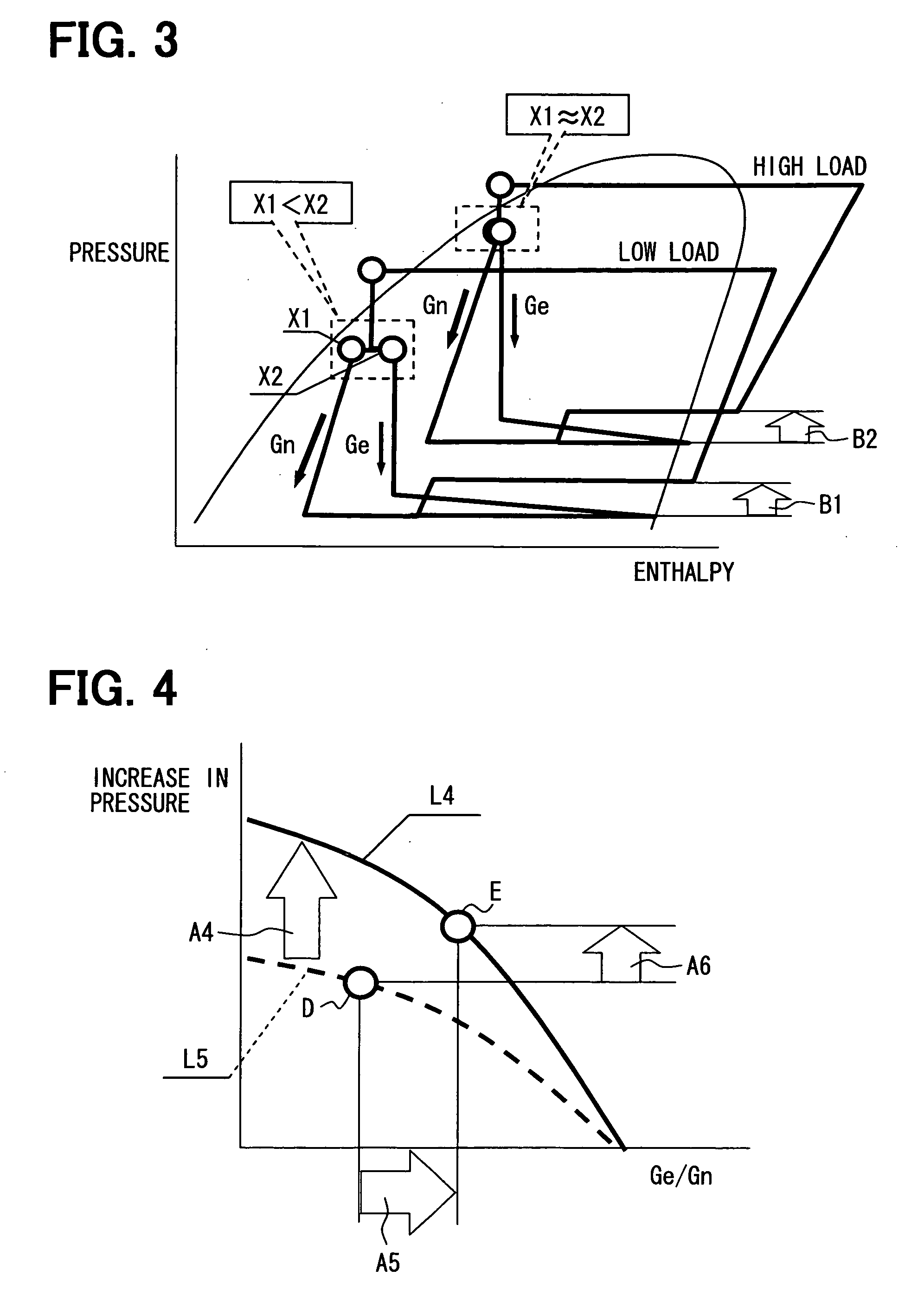Vapor compression refrigerating cycle apparatus
a refrigerating cycle and vapor compression technology, applied in the direction of refrigerating machines, lighting and heating apparatus, fluid circulation arrangement, etc., can solve the problems of difficult to achieve the improvement of the cop sufficiently, and the efficiency of the ejector is improved, and the input energy applied to the ejector is reduced, the effect of increasing the pressur
- Summary
- Abstract
- Description
- Claims
- Application Information
AI Technical Summary
Benefits of technology
Problems solved by technology
Method used
Image
Examples
first embodiment
[0020]A first embodiment of the present invention will now be described with reference to FIGS. 1 to 5. FIG. 1 shows a vapor compression refrigerating cycle of the first embodiment. The vapor compression refrigerating cycle apparatus is, for example, mounted in a vehicle for an air conditioner.
[0021]The vapor compression refrigerating cycle apparatus generally includes a compressor 1, a radiator 2, a receiver 2a, a first throttle device 3, a flow distributor 8, an ejector 5, a first evaporator 6, a second evaporator 7 and a second throttle device 4. The compressor 1, the radiator 2, the receiver 2a, the first throttle device 3, the flow distributor 8, the ejector 5 and the first evaporator 6 are connected through refrigerant pipes in a form of loop. The refrigerating cycle apparatus further has a suction passage 9 diverging from the flow distributor 8 and connecting to the ejector 5. The second throttle device 4 and the second evaporator 7 are disposed on the suction passage 9. An o...
second embodiment
[0060]A second embodiment of the present invention will be hereinafter described.
[0061]In the first embodiment, the expansion valve 3, the capillary tube 4, the ejector 5, the first evaporator 6 and the flow distributor 8 are separately disposed from one another, but can be integrated as follows.
[0062]For example, the flow distributor 8 can be integrated with the expansion valve 3. As another example, the flow distributor 8 and the capillary tube 4 can be integrated with each other. As further another example, the flow distributor 8 and the ejector 5 can be integrated with each other. In such cases, devices around the flow distributor 8 are reduced in size. Therefore, mountability of the refrigerating cycle apparatus to the vehicle improves.
[0063]Further, the flow distributor 8, the ejector 5 and the first evaporator 6 can be integrated with each other. In such a case, since the first evaporator 6 is provided as a base device, individual spaces for mounting the flow distributor 8 an...
PUM
 Login to View More
Login to View More Abstract
Description
Claims
Application Information
 Login to View More
Login to View More - R&D
- Intellectual Property
- Life Sciences
- Materials
- Tech Scout
- Unparalleled Data Quality
- Higher Quality Content
- 60% Fewer Hallucinations
Browse by: Latest US Patents, China's latest patents, Technical Efficacy Thesaurus, Application Domain, Technology Topic, Popular Technical Reports.
© 2025 PatSnap. All rights reserved.Legal|Privacy policy|Modern Slavery Act Transparency Statement|Sitemap|About US| Contact US: help@patsnap.com



